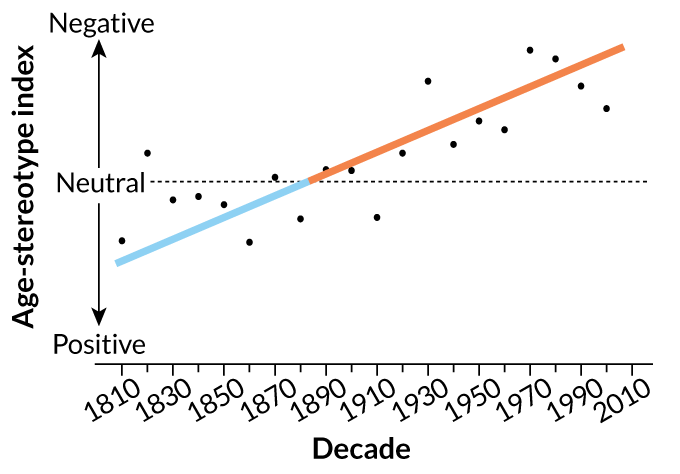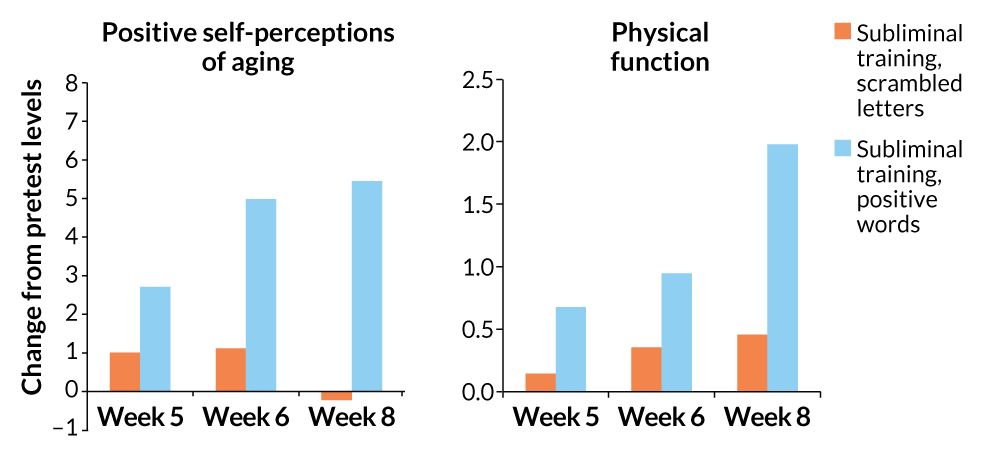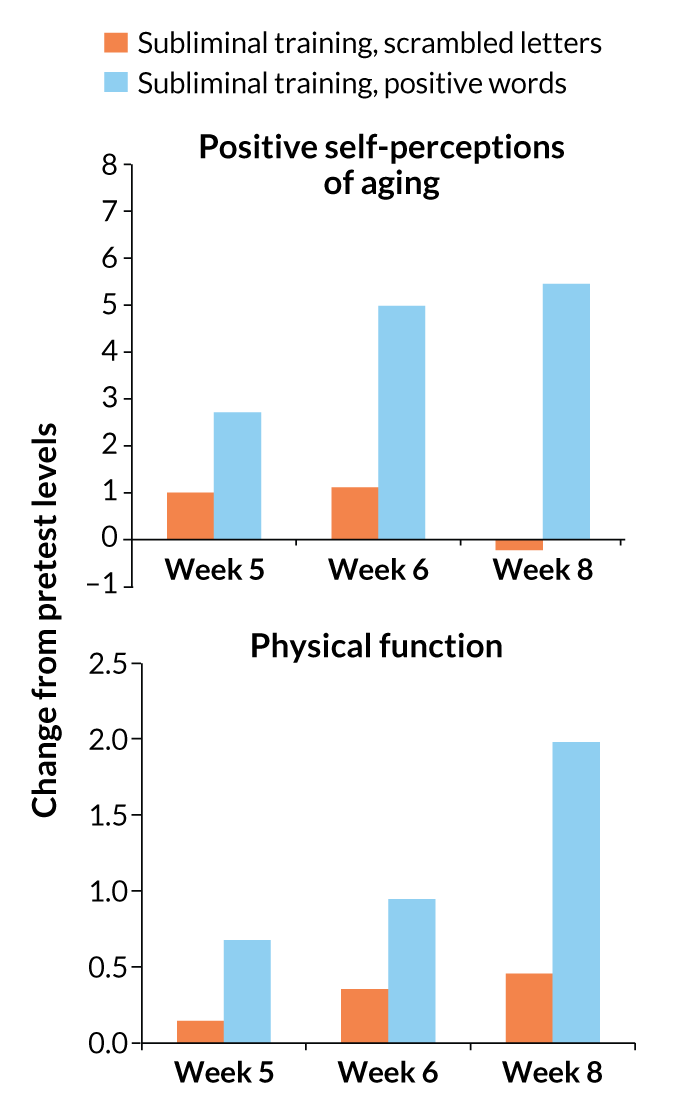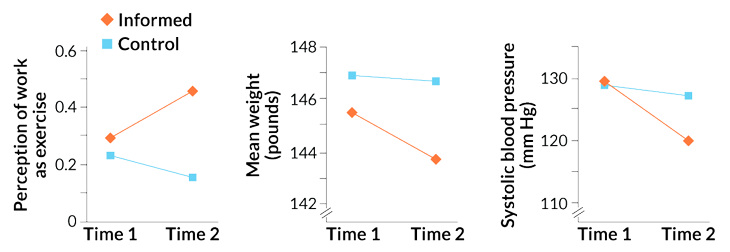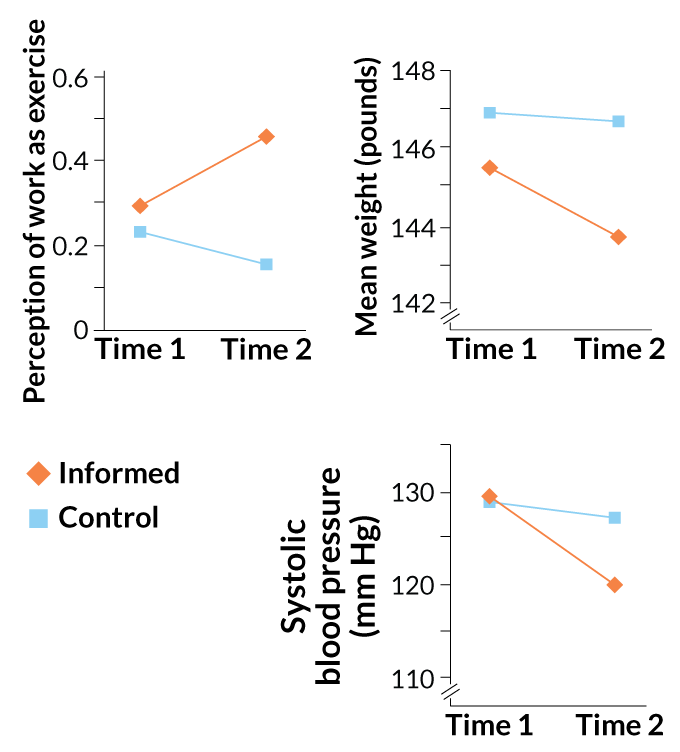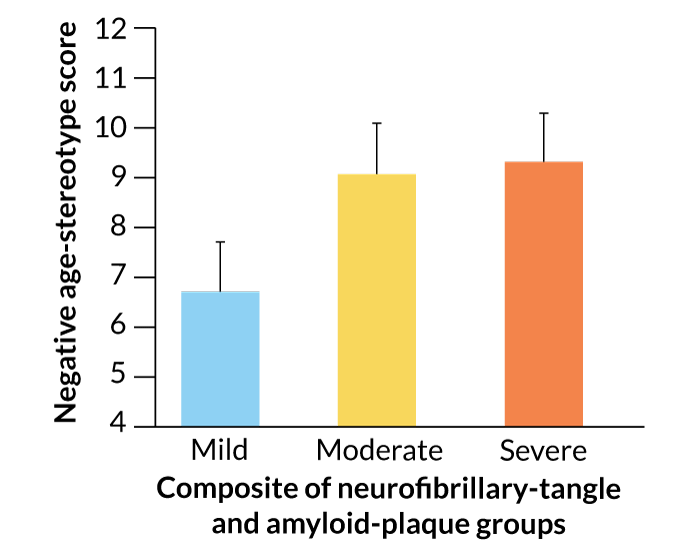Positive attitudes about aging may pay off in better health
A bias against growing older has physical effects
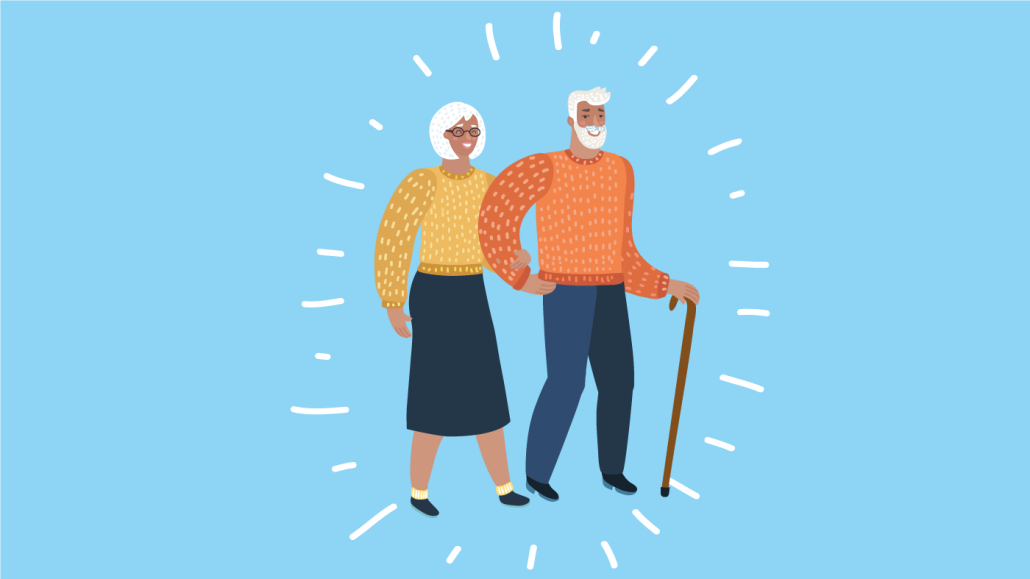
POSITIVE SPIN Using subliminal messages to shift attitudes about aging from negative to upbeat might just pay off in better health.
cosmaa/iStock/Getty Images Plus, adapted by E. Otwell
The first time someone offered me a seat on the subway, I reflexively declined, and then stewed about it all the way home. Sheesh, I thought, do I really look like an old lady in need of assistance? When I got off the train, I swear my knees felt a bit creaky as I clomped up the subway steps.
When we’re busy doing things we love — which for me these days means playing with my two young granddaughters — we don’t think about how old we are or the state of our knees. But then something pulls us up short, like a polite young man offering his seat, or catching a view of a selfie from an unflattering angle, and suddenly we’re walking more slowly, feeling just a little worse about life in general.
The way these internalized attitudes about aging affect us physically is a focus within a growing field in social psychology known as mind-body studies. In the next few months, the World Health Organization is expected to publish the results of a global investigation of ageism — discrimination toward the aged, akin to racism and sexism — that will address how to fight the prejudice. The report will also outline the myriad ways that ageist attitudes can affect the health and well-being of older people.
Psychologist Becca Levy is a contributor to the forthcoming WHO report and has spent her career linking negative aging attitudes to such measures as walking speed in older people, a greater likelihood of developing the brain changes of Alzheimer’s disease and even a reduction in life span.
But it’s not all grim; Levy, at the Yale School of Public Health, has also shown that something as simple as subliminal exposure to age-positive words can lead to physical improvements in older people of the sort that typically come about only after a program of regular exercise. If Levy and other scientists are correct, putting a more positive spin on our general view of aging might make a profound difference in the health of people over 65, the fastest-growing age group in America today.
It seems almost too good to be true to think that a simple shift in mind-set could make a serious dent in the $702 billion spent annually on Medicare, 90 percent of which is for older people with multiple chronic diseases. But that’s what some of the most surprising mind-body findings suggest: A more positive attitude toward aging leads to improvements in older people’s memory, gait, balance, speed and a quality that Levy refers to as “will to live.”
Words matter
Levy began research in this field during graduate school in the 1990s, when she first assessed the physical impact of ageism using a technique she called “age-stereotype activation.” She wanted to test the hypothesis that holding ageist attitudes might be a literal health hazard for older people.
First she recruited a couple dozen people of all ages living near Harvard University, where she was studying social psychology, to brainstorm words that represented positive and negative stereotypes of old age. “Decrepit, ” “incompetent” and “decline” were among the 12 they settled on as both relevant to aging and negative; “accomplished” and “sage” were among the 12 deemed both relevant to aging and positive.
Then she brought into her lab 90 adults ages 60 to 90 — three-quarters from the Boston metro area, one-quarter from rural Vermont — and randomly assigned them to be exposed to either the negative or positive terms, interspersed with a few neutral words like “between.”
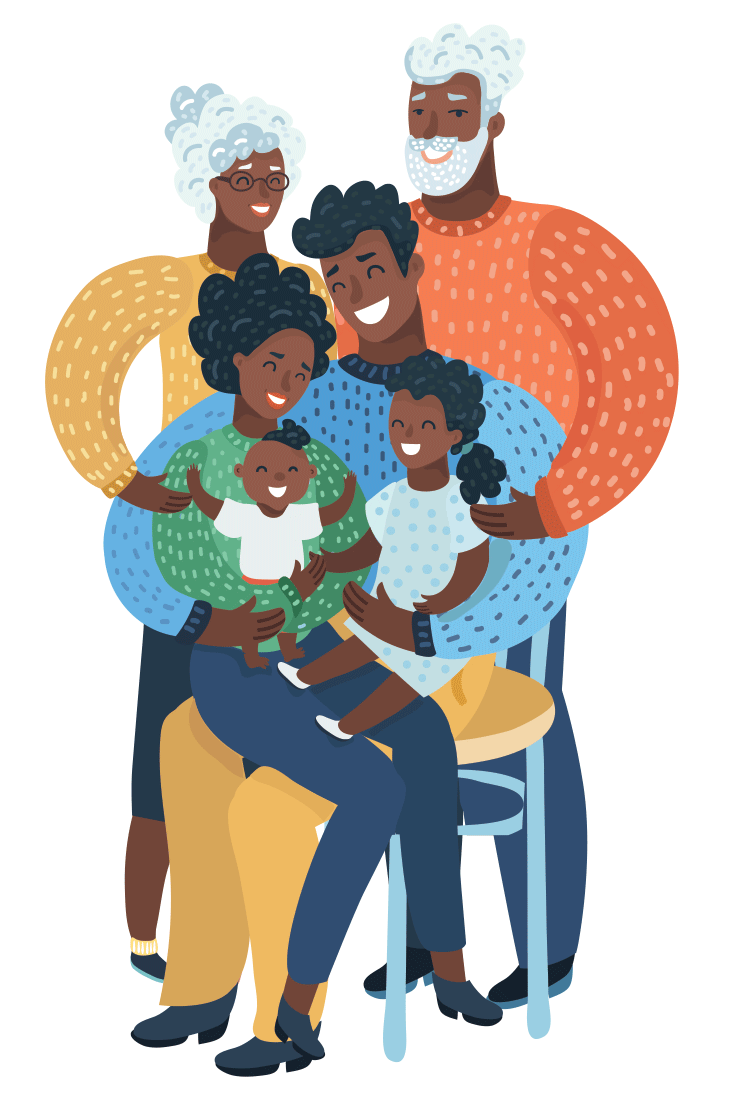
“We put them in front of a computer and flashed the words at the level of perception without awareness,” Levy says, describing the technique she also used 20 years later for her study using age-positive words as therapy. The words flashed so quickly on the screen that they appeared only as a blur. This well-tested “semantic priming” technique operated below the level of consciousness to get the subject thinking of aging in a particular way, as either a benefit or burden. “I designed that method after reading about research that was done activating race stereotypes,” she says. In race relations, the technique, which has been the subject of some controversy (SN: 4/22/06, p. 250), has been used to identify an underlying prejudice known as “implicit bias.”
When applied to older people, implicit bias has a particularly cruel twist: If you live long enough, it becomes prejudice against a group you now belong to. Levy was interested in whether this prejudice, which pervades so much of Western culture, would eventually have physical effects on an older person’s aging body.
Subjects exposed subliminally to negative age stereotypes showed a decline in performance compared with their results on earlier memory tests (taken right before exposure to the loaded words), Levy found. Those exposed subliminally to positive age stereotypes showed an improvement. The biggest negative effects of the downer words were in tests of immediate recall (an average drop of 1.77 points, on a 7-point scale) and delayed recall (down 1.11 points on a 7-point scale). The biggest improvements in the positive-bias group were in tests of immediate recall (an average increase of 0.98 points on a 7-point scale) and photo recall (up 1.4 points on an 8-point scale).
When she wrote up her findings in 1996 in the Journal of Personality and Social Psychology, Levy offered two ways of looking at these results. The pessimistic view was that “the stereotype that memory decline is inevitable can become a self-fulfilling prophecy.” But the optimistic reading was that memory decline is not inevitable. “In fact,” she wrote, “the studies show that memory performance can be enhanced in old age … as the consequence of a brief priming intervention.”
Pernicious predictors
In Western culture, the most deeply held aging stereotypes tend to be the negative ones. Levy and a grad student in computational linguistics, Reuben Ng, now at the National University of Singapore, did a linguistic analysis of 400 million words in written material collected from the past 200 years. The words describing older people grew progressively more negative over time, the two reported with colleagues in 2015 in PLOS ONE. As aging became seen as a medical problem and the proportion of the population over age 65 grew, both changes were “significantly associated with the increase in negative age stereotypes,” the researchers wrote. “The upward trajectory of age-stereotype negativity makes a case for remedial action on a societal level.”
These negative views of aging can have pernicious physical effects. In 2002 in the Journal of Personality and Social Psychology, Levy and colleagues published an analysis of data from the Ohio Longitudinal Study of Aging and Retirement. Of 660 subjects over age 50 who had been followed for more than 20 years, those with the most negative attitude toward aging when the study began died at an average age that was 7.5 years younger than those with the most positive attitudes.
A German study attempting to suss out the true direction of this relationship concluded that belief in age stereotypes was a more accurate predictor of health than the other way around. The researchers reported in 2007 in the Journals of Gerontology, Series B that it wasn’t that people had positive views of aging because they were healthy; they were healthy because they had positive views of aging.
The preponderance of research evidence, collected over a decade and a half, is what gave Levy the more recent idea to turn age-stereotype activation into an actual treatment.
A dose of positivity
Levy suspected the treatment — exposing older people to positive age-related words — would work best when done on a subliminal level, rather than via cheery self-talk or other explicit reinforcement. When presented beneath the level of consciousness, she believed, positive age stereotypes could overturn long-held ageist beliefs that the mind tries to hold on to.
She and colleagues recruited 100 individuals, ages 61 to 99, who received one of four “treatments” once a week for four weeks. The “implicit stereotype” treatment involved sitting at computers and being exposed subliminally to positive aging stereotypes using the same priming technique Levy had used in her grad school experiment; the “implicit control” treatment involved subliminal exposure to random strings of letters. The “explicit stereotype” treatment asked participants to imagine and then write about “a senior citizen who is mentally and physically healthy”; the “explicit control” condition had them write about a neutral topic, like the uniforms people wear to work.
Three weeks after the treatments ended, the subjects came back. As Levy reported in 2014 in Psychological Science, exposure to positive stereotypes had a lasting positive impact, and implicit exposure worked better than explicit exposure. The investigators measured balance, walking speed and the ability to get into and out of a chair. Low scores on these measures, Levy and colleagues wrote, mean a higher risk for disability, nursing home placement and earlier death. The subjects in both the “implicit stereotype” and “implicit control” group had scores close to 7 out of 12 on the physical function test the week before the intervention started. In the three weeks following the intervention, the implicit exposure group saw statistically significant improvements. In contrast, the implicit control group made almost no change from the first measurement to the last.
Not only did the effects seem to last, but they were more robust than those seen in a comparable group of older people who were given an in-home exercise program for six months. Levy and colleagues wrote that they seemed to have created “an implicit fitness center” for older people.
Time warp
Levy’s work builds on the work of her mentor, Harvard psychologist Ellen Langer, who has been examining the theory of mind-body unity since the late 1970s, when she conducted the audacious “counterclockwise study.”
In 1979, Langer housed 17 men in their early 70s in a former monastery in New Hampshire for five days. She told the men they would spend that time thinking about what their lives had been like in 1959, when they were in their 50s; she also told them she expected those recollections to have a salutary effect.
“It was all about the mind-body connection,” Langer told me recently by phone. Her hypothesis was that “if you take the mind and put it back in time, the body follows suit.”
What Langer didn’t tell the participants was that there would be two groups operating under slightly different conditions. For half of the men, the experience would consist solely of remembrance — talking about what things were like in 1959, but from the perspective of the current date, 1979. For the other half, the men were told not only to remember 1959, but to pretend it was 1959.
For both groups, the living quarters were outfitted with historical cues — furniture, home appliances, newspaper headlines, reports on the radio — to evoke the world of 20 years earlier. (Significantly, all mirrors were removed.) The only difference was that for the time capsule group, when they talked about that time period, they were urged to use the present tense.
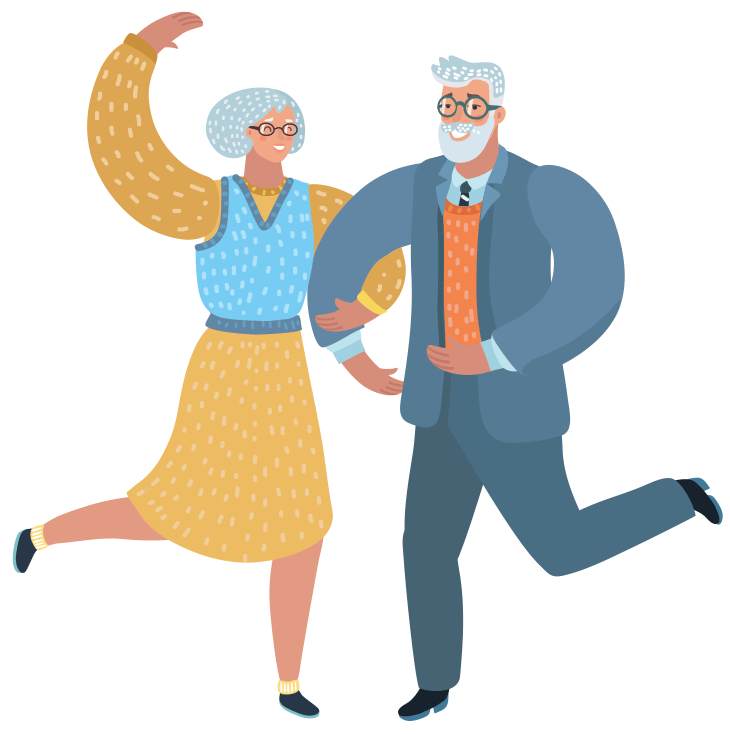
The men in the time capsule group had daily sessions talking about news events — Castro attacking Cuba, a Soviet rocketship reaching the moon, the Colts winning the NFL championship — as if they were happening right then. (The control group discussed the same events, but in the past tense.) Like the control group men, the time capsule group watched The Ed Sullivan Show on a black-and-white television and listened to Nat King Cole and Perry Como on a vintage radio — but this group discussed those shows as though they had just been aired.
At the end of five days, the men in the time capsule group had lower blood pressure, stronger hand grip, better hearing and vision and fewer aches and pains than they had at the outset. It wasn’t just the result of being at a nice retreat for five days, since the men in the control group improved, too, but not to nearly the same extent. In the time capsule group, finger length — an indication of joint flexibility — increased in three of the eight men. In the control group, one in three men had a decrease in finger length. Langer never submitted her study to a professional journal; she thought it was too small, not to mention too radical. But she did write it up in Higher Stages of Human Development, a peer-reviewed volume she coedited for Oxford University Press in 1990.
“The mind and body are one,” Langer says. “We all have far more control over our health and well-being than we realize.”
In the years since, Langer has conducted dozens more studies that demonstrate the mind-body connection. In one, known as the “chambermaid study,” Langer and coauthor Alia Crum asked 84 hotel maids whether they exercised. Every one said not really. Langer and Crum then told half the volunteers that their jobs actually were exercise, and that making beds, for instance, was no different from working out at the gym. For the other half, the scientists made no attempt to reframe how the maids viewed their daily activity levels. (For unexplained reasons, the maids in the experimental group turned out to be younger than the controls, with average ages of 34 and 42, respectively.)
As Langer and Crum, now at Stanford University, reported in 2007 in Psychological Science, that single change — encouraging the chambermaids to think of their jobs as exercise — made a big difference. With no change in anyone’s actual activity levels or food intake, the maids in the control group were virtually the same at the four-week follow-up, while those in the experimental group had lost weight (1.78 pounds on average), showed a decrease in waist-to-hip ratio, had a lower body mass index (a drop from an average of 26.05 to 25.70) and had a drop in blood pressure from an average of 130/80 to 120/75. The only difference between the two groups — other than the age difference, which the authors said they controlled for in their analysis — was a change of mind-set.
When it comes to aging, even the changes that seem most harshly and immutably physiological, like the plaques of Alzheimer’s disease, have been linked to attitude. In the long-running Baltimore Longitudinal Study on Aging, for instance, attitudes toward aging appeared to make a difference in what happened to the brains of the participants, who were all dementia-free when the study began. People who had more negative views of aging at the outset had a significantly greater buildup, measured postmortem, of the amyloid plaques and neurofibrillary tangles that are the markers of Alzheimer’s, compared with those who had more positive attitudes at the outset. Those with negative views also had more shrinkage in the hippocampus, the brain’s memory center.
Living the stereotype
Some scientists worry about the true direction of the relationship between negative attitudes toward aging and health. “It’s hard to tease things out,” says Laura L. Carstensen, director of the Stanford Center on Longevity. “It’s hard to be sure that it’s not some third variable” that accounts for the link between better attitudes and better outcomes. For instance, she says, “it’s a highly replicated finding that positive emotional experience is related to longer life expectancy.” But might some other factor be causing the negative attitude — maybe an underlying illness that researchers are missing — that confuses the direction of cause and effect?
“When you’re in good physical health, you tend to be happier,” Carstensen says. So maybe the healthiest older people, who will live longest precisely because they’re healthiest, also happen to have the best attitude toward aging, rather than the other way around. “It always gnaws away at me that there might be some relatively subtle physical vulnerability under way that we’re not picking up,” she says.
Many carefully designed studies, including her own, have found a connection between positive attitude and longevity even after correcting for confounding factors such as health. In fact, as she wrote in a 2019 review article in Cognition and Emotion, recent work has uncovered what she calls a “positivity effect” — the preference, as we age, to accentuate the positive, as revealed in age-related shifts in the emotional content of what people remember, what images catch their attention and how they interpret ambiguous social situations. Still, she frets that even the best-intentioned investigators might be missing something in their older subjects.
“I’d put my money less on attitude and more on problem-solving,” she says — even though problem-solving and attitude are in many ways intertwined. If an older person’s knee starts hurting, someone with a negative view of aging is likely to think she just has to learn to live with it. The problem-solving kicks in only for people who don’t see age as one unremitting, inevitable decline — age-positive people like Carstensen herself. “If my knee isn’t doing well,” she says, “I call my trainer and he has me start doing different stretches.”
Another concern is the one attached recently to the research methodology at the heart of some of these studies: psychological priming (SN: 5/19/12, p. 26). While Levy’s studies involve subliminal exposure to priming cues, some of the limitations of studies involving more explicit forms of psychological priming — having subjects hold a hot coffee mug to elicit warm and fuzzy feelings, for instance — might also apply to some of her findings about ageism.
One salient point, according to Levy, is that stereotypes about aging are so pervasive. They can easily be assimilated “from the surrounding culture,” become part of an individual’s self-definition, and ultimately affect how that person’s body operates — a process she describes as “stereotype embodiment.”
The process has four components, she explained in 2009 in Current Directions in Psychological Science: The stereotypes become internalized across one’s life span, can operate without us realizing, gain salience as they become relevant to our own situation and use multiple cognitive pathways to gain a hold. Her bottom line: Aging itself is, in part, a social construct.
A few months ago, I had another subway encounter that made me feel a lot better about what it means to be older. I was coming home from dinner with a friend, wearing my vintage patterned winter coat, black cowboy boots and a funky herring-bone pocketbook with bright coral straps. As I stepped off the train and started to pull on my periwinkle gloves, a college-aged woman approached. “You look great,” she said. “I love your style. It’s just what I aspire to when …” Her voice trailed off. She seemed embarrassed that she’d planned to end that sentence with “when I’m your age.”
But the fact that she had seen me as old was actually the point; the view of aging she invoked was a positive one. I told her she had made my night, and I found myself sprinting up the stairs and walking home briskly, happy to be some young stranger’s inspiration for a cool and lively old age. It suddenly felt possible that I could stay nimble, both mentally and physically, no matter how old I got.

